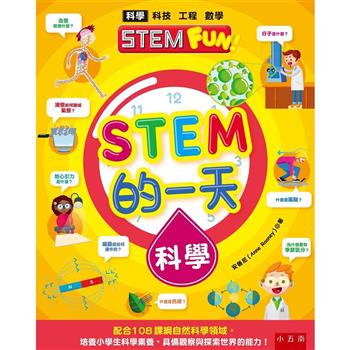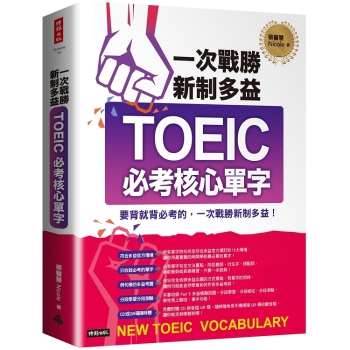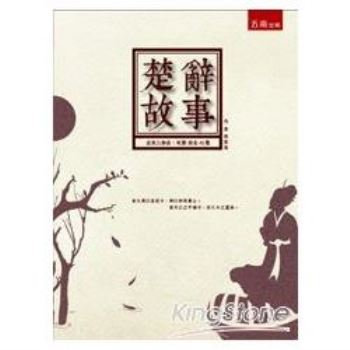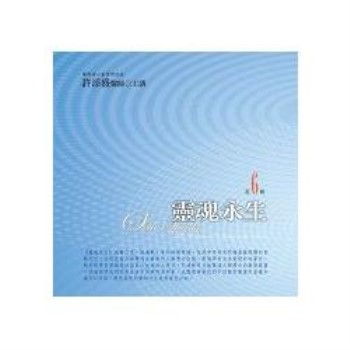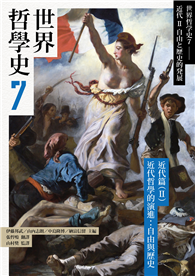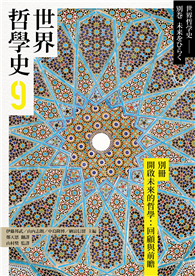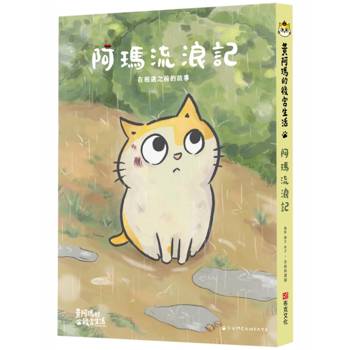| FindBook |
有 3 項符合
光大傳承─南加州華人三十年史話:第一卷(全四卷,國際英文版)的圖書 |
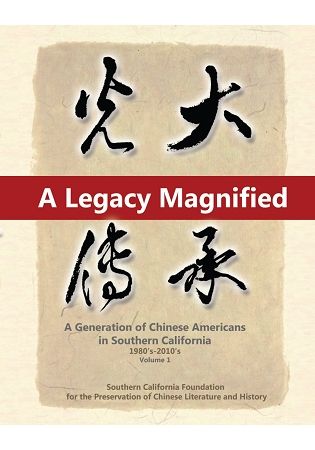 |
光大傳承─南加州華人三十年史話:第一卷(全四卷,國際英文版) 作者:陳十美(總編輯) 出版社:漢世紀數位文化EHGBooks 出版日期:2017-12-01 規格:29.74cm*21.59cm (高/寬) / 平裝 / 524頁 |
| 圖書館借閱 |
| 國家圖書館 | 全國圖書書目資訊網 | 國立公共資訊圖書館 | 電子書服務平台 | MetaCat 跨館整合查詢 |
| 臺北市立圖書館 | 新北市立圖書館 | 基隆市公共圖書館 | 桃園市立圖書館 | 新竹縣公共圖書館 |
| 苗栗縣立圖書館 | 臺中市立圖書館 | 彰化縣公共圖書館 | 南投縣文化局 | 雲林縣公共圖書館 |
| 嘉義縣圖書館 | 臺南市立圖書館 | 高雄市立圖書館 | 屏東縣公共圖書館 | 宜蘭縣公共圖書館 |
| 花蓮縣文化局 | 臺東縣文化處 |
|
|
- 圖書簡介
A Legacy Magnified: A Generation of Chinese Americans in Southern California, 1980’s-2010’s (南加華人三十年史話英文版) is a monumental publication jointly authored by a team of renowned group of writers consisting of 17 chapters, nearly 1 million words, and more than 1,300 photographs, many of which are collected from historical archives. It is an unprecedented endeavor undertaken by more than 500 volunteers who were privileged to have witnessed the drastic and amazing transformation of Chinese American communities in Southern California during the critical three decades, from the 1980’s to the 2010’s.
This handsome volume encompasses an historical account of multifarious realms of community development, including various aspects of culture, history, political participation, economic growth, businesses, education, language, sports, mass media, science and technology, scholarly research, literature, music, dance, theatre and other performing arts, among other subjects.
This book is substantial, and is dedicated to “All Chinese of past, present, and future generations who contribute to the world culture by incorporating the quintessence of Chinese civilization and their heritage.”
Postscript
A Crystal Formed Out of 900,000 Beads of Sweat
Following 1,460 days of toil and labor, an estimated 1,460 person-visits to the small meeting room of the American-East Asian Cultural and Educational Foundation, and consuming over 1,460 boxes of bento, A Legacy Magnified: A Generation of Chinese Americans in Southern California, 1980’s-2010’s, containing over 900,000 Chinese characters, is finally available in print.
In the past 30 years, the Chinese in Southern California excelled in their respective fields of expertise and in all realms of activities, including culture, politics, economy, education, sports, mass media, business, science and technology, academics, arts, literature, music, dance, drama, food, and service industry. They have thrived and continue to flourish. To write a book like A Legacy Magnified covering all these aspects with limited human and financial resources and working under time constraints would have been quite impossible.
Fortunately, when I proposed to write a book like this, I received warm responses from the Chinese community. More than a hundred individuals signed up as volunteers, and donations streamed in. I was greatly encouraged. While I was excited about the prospect, I felt that the onus of my responsibility was heavy. In order to live up to the expectations of my supporters, I treaded with fear and trepidation as if I was walking on thin ice. I sketched the book’s plan and structure and proactively commenced the work.
Initially I thought we could publish the book after collecting enough articles and material within four months. Unexpectedly, however, we continue to receive more and more material from all sources. It has taken us four years, instead, to produce this volume after we have incorporated all available information and data. As a result of the enthusiastic response from the Chinese American communities, the original plan to divide the book into fourteen chapters in approximately 60,000 Chinese characters, was once expanded to about 2,000,000 characters. We have managed, finally, to reduced the book to approximately 900,000 characters in seventeen chapters in its current form and shape. Dr. San-pao Li, Professor Emeritus, a historian by profession, thoughtfully offered the capstone of this book with its encompassing title Guang Da Chuan Cheng 光大傳承(Legacy Magnified), highlighting the historical significance of this publication.
During this period of over four years of research, exploration, and visitations, we solicited and received more than 300 articles. We collected oral history of over 500 individuals. In addition, we also collected over 200 books and publications related to our subject, over 1,000 newspaper clippings, over 1,000 questionnaires from Chinese American families, over 1,000 precious photos, and more than 2,000 pieces of contact information of outstanding personalities in the Chinese American community. In the meanwhile, we developed and launched a new web site that will enable us to continue to update our content in the future. In the process of compiling this work, we received support from University of California, Los Angeles besides the Chinese community. UCLA East Asian Library launched a special project and employed additional staff to further document the oral histories of some eminent Chinese Americans in order to archive them as raw research material for in-depth scholarly studies in the future.
As I was sorting out the nearly 2,000 telephone numbers collected, I recall how tirelessly we went out of the way to search for relevant information. I recall how our editorial team collected, reviewed and edited the manuscripts contributed by over 100 outstanding Chinese American, and how assiduously they reconciled the innumerable factual contradictions, verified, sorted out, complied, reviewed and fixed the errors. I recall how our volunteers rendered their service so willingly and selflessly. Touched by the dedication of all these individuals, I became frequently oblivious of time, skipping meals and sleep. I recall the many warm and thoughtful encouragements offered as well as skepticisms of all kinds. I recall getting up in the countless early mornings, still exhausted and fatigued, yet with strong conviction and faith, I struggled to continue the tasks before me. I recall the four years during which I neglected inadvertently my family and many of the administrative responsibilities of the school of which I am the principal. I recall the unparalleled commitment displayed by my fellow workers in the modest editorial staff office located at the back of the Sunshine Education Center. This project of immense scope is now finally completed. The 900,000 Chinese characters contained in this book represent, indeed, the crystallization of 900,000 beads of sweat. While my heart dances with joy, I find myself in fear and trepidation. Although I feel that I have exhausted my utmost, the limited space available in this book cannot possibly comprehensively document every marvelous detail of the splendid history of the Chinese immigrants in Southern California during the past half century. Errors are understandably unavoidable, but what makes me feel uneasy most is the possibility of inadvertent omissions of much of the accomplishments of many outstanding individuals. The only comfort is that we have developed and launched a website through which we can always supplement and update information received in the future. I hope earnestly that our readers here and abroad will continue to offer constructive comments and suggestions.
Finally, before this book goes to print, I wish to extend my profound gratitude to all individuals and Chinese American organizations and their leading officers for their guidance, suggestions as well as their financial contributions during the entire process of its preparation and production. The Chinese language media spared no space to report to their readers or viewers details of every stage of this project. I remain deeply touched. The American-East Asian Cultural and Educational Foundation and the North America Chinese Writers’ Association in Los Angeles北美洛杉磯華人作家協會, of both which I am a member, contributed significantly during the initial phase of this project. The unstinting support that I have received from the board members of the Southern California Foundation for the Preservation of Chinese Literature and History Inc.南加華人文史保存基金會, all of whom are eminent individuals, the sustained encouragement of all the teachers, students, and their parents alike at Sunshine Education Center, and the generous support from my family and friends will forever be remembered. Last but not the least, I would like to acknowledge with profound gratitude and appreciation the dedication, commitment, and diligent effort of each and every participant in this project and its staff. My sincerest gratitude to you all!
May Chen
November 31, 2013
Los Angeles, CA - 作者簡介
南加華人文史保存基金會(Southern California Foundation for the Preservation of Chinese Literature and History)
The Foundation was established on January 20, 2013. Its purpose was to continue the effort of American East Asian Culture and Education Center to bring to conclusion the publication of A Legacy Magnified: A Generation of Chinese American in Southern California, 1980’s-2010’s with additional expertise. It is our hope to continue to document the successes and accomplishments achieved by Chinese Americans in the Southland during that past three decades. Founding members of the Board of Directors included Michael G. Cheung, Karen Chen, Paul Shao-Han Sher, Evans Y. Lam, Jin-jen Lee, Grace Hu, Sandy Ho, David H. Ma, Cathy Kit-yee Choi, Frances Wang, William S. Chin, Shiyun Chung, and honorary members such as Huibao Xu, Karen Kuo-Limb, Ming Bin Kuo, Joseph Y. Hsu, Ellen Fu, Leo Chu, Richard Y. Koo, Tung Wang, Matthew Yuan-Ching Lin, and Tom Tsong-ming Liaw, all leaders of various community organizations and associations. They each rendered significant service and support. The roles of the Board members are rotated annually. The current members are: Evans Y. Lam (President), May Chen (Chief Executive Officer), Karen Chen (VP), Michael G. Cheung (VP), Paul Shao-Han Sher (Treasurer), Shiyun Chung (Secretary), Sandy Ho (PR), William S. Chin (PR), and San-pao Li, Jin-jen Lee, Yunding Li, Jinping Duan, Cathy Kit-yee Choi, Frances Wang, Grace Hu, Suellen Cheng, and Karen Kuo-Limb.
南加華人文史保存基金會(Southern California Foundation for the Preservation of Chinese Literature and History)
The Foundation was established on January 20, 2013. Its purpose was to continue the effort of American East Asian Culture and Education Center to bring to conclusion the publication of A Legacy Magnified: A Generation of Chinese American in Southern California, 1980’s-2010’s with additional expertise. It is our hope to continue to document the successes and accomplishments achieved by Chinese Americans in the Southland during that past three decades. Founding members of the Board of Directors included Michael G. Cheung, Karen Chen, Paul Shao-Han Sher, Evans Y. Lam, Jin-jen Lee, Grace Hu, Sandy Ho, David H. Ma, Cathy Kit-yee Choi, Frances Wang, William S. Chin, Shiyun Chung, and honorary members such as Huibao Xu, Karen Kuo-Limb, Ming Bin Kuo, Joseph Y. Hsu, Ellen Fu, Leo Chu, Richard Y. Koo, Tung Wang, Matthew Yuan-Ching Lin, and Tom Tsong-ming Liaw, all leaders of various community organizations and associations. They each rendered significant service and support. The roles of the Board members are rotated annually. The current members are: Evans Y. Lam (President), May Chen (Chief Executive Officer), Karen Chen (VP), Michael G. Cheung (VP), Paul Shao-Han Sher (Treasurer), Shiyun Chung (Secretary), Sandy Ho (PR), William S. Chin (PR), and San-pao Li, Jin-jen Lee, Yunding Li, Jinping Duan, Cathy Kit-yee Choi, Frances Wang, Grace Hu, Suellen Cheng, and Karen Kuo-Limb.
總編輯陳十美,May Chen, Editor-In-Chief
•President of American East Asian Culture & Education Foundation
•Founder and Chief Executive Officer of Southern California Foundation for the Preservation of Chinese Literature and History
•President of North America Chinese Writers' Association, Los Angeles
•Principal of Sunshine Education Center
•Publisher of So Cal Chinse Community, 1980-1989
•Founded Huaxing Academy and Sunshine Education Center in 1987
May Chen has resided in the United States for over three decades, during which she has spared no effort in engaging herself in a wide spectrum of activities promoting Chinese culture and civilization. She has dedicated her entire adult life to educate others about China’s cultural heritage. - 目次
Table Of Contents
Table Of Contents i
Preface I I
Preface II IV
Preface III VII
Preface IV X
Introduction XV
CHAPTER ONE SEVEN COUNTIES IN SOUTHERN CALIFORNIA WITH THE LARGEST CONCENTRATION OF THE CHINESE POPULATION 1
I. Los Angeles County 1
1. The Rise and Decline of the Old Chinatown 2
2. “Little Taipei”----A Typical City for Chinese Immigrants 22
3. “The China Valley” Formed by the Chinese Communities in Greater San Gabriel 32
4. The Formation of Four Waves of the Chinese Immigration 33
5. Gradual Formation and Development of the Chinese Economic Impact 37
6. The Establishment of Transnational Business Enclave 47
II. Orange County 50
1. Early Chinese Farm Workers 50
2. Growth of the Chinese population 51
3. Vietnamese Chinese Businesses Flourish 55
4. A Variety of Complementary Organizations 56
4.1 Chinese Friendship Association 56
4.2 Chamber of Commerce and Other Overseas Chinese Organizations 57
4.2.2. Orange County Chinese American Chamber of Commerce 58
4.3 Chinese American Cultural and Educational Organizations 60
4.4 Taiwanese Medical and Dental Association of Orange County 65
4.5 Orange County Taiwanese Benevolent Association 66
4.6 Chinese American Churches and Buddhist Temples 66
5. Orange County in California---A Base Camp for the Asia’s Richest 69
III. San Diego County 71
1. Early Chinese Fishermen Brought Prosperity to California Economy 71
2. Chinese Business Centers and Their Rise and Decline 74
3. Ah Quin,“The Mayor of Chinatown” 75
4. Countering the Impact of Anti-Chinese Sentiment 76
5. Freemasons, Chinese Consolidated Benevolence Association, and Chinese Americans in the Military in World War II 77
6. Growth of Chinese Population and Outstanding Chinese in Politics, Economics, Culture and Education 79
6.1 Population Growth and Community Development 80
6.2 Chinese American Highly Commended in Mainstream Society 81
6.3 Chinese Language Schools Flourished 89
6.4 Outstanding Chinese Americans in Economic Realm 92
6.5 Robust Development in Culture and Mass Media 97
6.5.3 The monthly magazines: We Chinese in America, Bi-an and East West Review 99
6.6 The Development of Overseas Chinese Organizations 101
6.7 Chinese American Arts Organizations 105
6.8 Religion and Beliefs 110
6.9 Many Ways to Merge into the Mainstream 111
IV. San Bernardino County and Riverside County 113
1. Early Chinese Immigrants 113
2. Building of Chinatown 115
3. Growth of Chinese Population and Community Development 116
3.1 San Bernardino County 117
3.2 Riverside County 118
4. Development of Chinese Communities in the Inland Empire 122
4.1 Development of Chinese Communities 123
5. Chinese Language Schools 126
5.1 Inland Riverside Chinese School 126
5.2 Riverside HuaXia Chinese School 127
5.3 San Yu Chinese Language School 127
5.4 Pomona Valley Chinese School 128
6. Chinese Christian Churches 128
6.1 Loma Linda Chinese Church 128
6.2 Evangelical Formosan Church of the Inland Empire 129
6.3 Riverside Mandarin Baptist Church, RMBC 130
6.4 Riverside Christian Alliance Church 131
6.5 Inland Chinese/Taiwanese Presbyterian Church 132
7. Student Organizations 132
8. Rapid Development of Chinese American Economy 134
9. Preservation of Chinese Culture and Tradition 136
V. Ventura County and Santa Barbara County 142
1. From Sui Mon Gong to Big Oak 143
2. Chinese Community in Ventura County 143
3. Growth in Chinese Population 144
4. Conejo Chinese Cultural Association and Thousand Oaks Chinese School 144
5. Chinese Language School of Ventura County 148
6. History of Chinese Immigrants in Santa Barbara 148
7. Early Chinese Contribution to the Development of Farming Economy in Santa Barbara 149
8. Gin Chow Accurately Predicted the 1925 Santa Barbara Earthquake 150
9. Development of Santa Barbara Chinese Community 151
10. Henry T. Yang’s Remarkable Contribution as Chancellor of UC Santa Barbara 152
11. Santa Barbara Became a Sister City of Weihai, China 154
12. Chinese Immigrants in Santa Barbara in the Past 30 Years 154
13. Santa Barbara Chinese American Association (SBCAA) 155
14. Santa Barbara Chinese Language School and Chinese Evangelical Church 155
VI. The Bright Future for Chinese Americans in Southern California 156
CHAPTER TWO ORGANIZATIONS FOUNDED ON SENTIMENT FOR HOMELAND 159
I. The Formation and Functions of Organizations 159
II. The Interpretation of Overseas Chinese and Their Organizations 162
III. Functions of Organizations Representing Old Time Traditional Community Groups 164
1. Chinese Consolidated Benevolent Association, Los Angeles (CCBALA) 164
1.1 Support China for the War against Japan 169
1.2 Seeking Welfare for Chinese Immigrants 169
1.3 Sponsored the 8th International Asian Business Trade Conference 170
1.4 Placing Vietnamese Refugees 170
1.5 Anti-MGM Action for Its Insulting Movie Content against Chinese 173
1.6 100th Anniversary Celebration 174
1.7 The Turbulence Caused by the American Anti-Immigration Act 174
1.8 Celebration of Independence Day in New Chinatown 175
1.9 Beautifying Chinatown - Negotiation with the State to Build a Park 175
1.10 Major Annual Events 176
1.11 The Twenty-Seven Associations and the Three Sub-Organizations 177
2. Other Chinatown Organizations with Historical Significance 192
2. 1 Chinatown Service Center 193
2. 2 Chinese Chamber of Commerce of Los Angeles (CCCLA) 194
2. 3 National Chinese Welfare Council at Los Angeles 195
2.4 The World Kwong Tung Community Association of Southern California Chapter 195
2.5 Chinatown Senior Citizen Service Center 196
2. 6 Overseas Chinese Association Los Angeles Chapter 197
2. 7 Cathay Manor Senior Care Services and Grand Senior Apartments 198
2.8 Chinese Historical Society of Southern California (CHSSC) 199
2. 9 Chinese American Museum (CAM) 200
2.10 Chinatown Public Safety Association 202
2.11 The Impact of the Closing of the Community Redevelopment Agency 202
IV. The Organizations Formed by People from Taiwan 203
1. Special Elements Applying to Taiwan Immigration 203
2. Their Outstanding Socio-economic Achievement 206
3. Gained the Reputation of Exemplary Immigrants 207
4. The Reasons for the Decline in Immigration to the U.S. 208
5. The Origin and Continuity of the Political Topics for Discussion 209
6. A Brief Summary of Numerous Organizations 209
6.1 Main Benevolent Organizations 209
6.2 A Brief Summary of Other Types of Community Organizations 220
6.2.2 Chinese Associations (CA) 241
7. The Insistence by "Taiwanese Americans" on the Different Meanings between Taiwanese and Chinese 258
8. The Main Organizations of "Taiwanese Americans" 259
8.1 Taiwanese Association of America (TAA) 259
8.2 Taiwanese American Foundation (TAF) 260
8.3 Taiwanese American Citizens League (TACL) 262
8.4 Formosan Association for Public Affairs (FAPA) 262
8.5 Taiwanese United Fund (TUF) 263
8.6 Taiwan Center Foundation of Greater Los Angeles 263
8.7 Taiwan American Association of East San Gabriel Valley 265
8.8 Taiwanese Association of Northwest Los Angeles (TANLA) 265
9. Hakka Organizations 266
9.1 Taiwanese Hakka Association of the World and Taiwanese Hakka Association of America 268
9.3 Southern California Taiwan Hakka Association 271
9.4 Meizhou Association of Southern California, USA 272
9. 5 Qin Lian Ling Fang Association 273
9. 6 American Hakka Center 274
9.7 World Federation of Chinese Traders Alumni (WFCTA), Los Angeles Chapter 275
9.8 Meinong Association, Xing Ning Association and Dapu Association 276
9.9 Hakka Foundation - Origin of The Spring Foundation 276
V. Organizations of Immigrants from Vietnam, Cambodia (Khmer) and Laos 277
1. The Origin of Immigrants Escaping through the Raging Water 278
2. The Cultural and Economic Development Founded on the Confucius School of Thought 281
2.1 Strongly Connected to Chinese Culture 282
2.2 Intelligence, Diligence and Grasping Opportunities Accounts for Their Rise 282
2.3 Business Development from Chinatown to the San Gabriel Valley to Westminster 284
3. Passion for Political Participation and Charitable Giving 285
3.1 March Forward Courageously in Political Participation 285
3.2 Exhibiting Their Great Compassion for People in Need 286
3.3 Victor Lu Sacrificed His Life for the Iraq War 287
4. The Sense of Mission to Keep up Chinese Culture in Their Sub-conscious 287
4.1 Praiseworthy Support from the Nationalist Government with All Its Strength 287
4.2 The Trend of Valuing Organizations came from Their Provincialism 288
5. The Unified Organizations Formed by the VCL Chinese 288
5.1 The Global Unified Chinese Organizations from Vietnam, Khmer and Laos (TGUCOVKL) 289
5.2 The Global Unified Chinese Organizations from Vietnam, Cambodia and Laos (TGUCOVCL) 291
6. Brief Introduction of the Main VCL Organizations 294
6.1 Indochinese American Political Action Committee (IAPAC) 294
6.2 America Vietnam Chinese Friendship Association 296
6.3 Cambodian Ethnic Chinese Association USA 300
6.4 Lao-Chinese Friendship Association of USA 302
6.5 Teochew Association of Southern California 302
6.6 Hainan Association of Southern California 304
6.7 Southern California Fukienese Association 306
6.8 Southern California Cantonese Association 308
6.9 Cà Mau Association of America 308
6.10 Xuan Wu San Buddhist Association 309
6.11 Vietnam Danang Thonhon School Alumni Association 310
6.12 The Elderly In-do Chinese Association 310
6.13 American Hai Ninh Community Association 311
6.14 Buddha Monastery Support Association 312
6.15 Rạch Giá Friendship Association of California 313
6.16 California Tong-An Association 313
VI. Organizations Formed by Immigrants from China 315
1. Causes for Mainland Chinese Immigration to the United States and Its Current Situation 316
2. Motivation for Investment Immigration 318
3. The Problems Generated from the Distance between the Rich and the Poor 320
4. Characteristics, Functions and Effects of Mainland Chinese American Organizations 322
5. Introduction of Main "Federations" 323
5.1 Federation of Chinese Americans 323
5.2 Kiangsu, Zhekiang & Shanghai Association of the USA (KZSUSA) 323
5.3 Chinese American Federation (CAF) 323
5.4 Roundtable of Southern California Chinese-American Organizations (ROSCCAO) 324
6. Main Individual Membership Organizations 326
6.1 Chinese CEO Organization 326
6.2 US-China Association of High-level Professionals 326
6.3 China Enterprise Association 327
6.4 Beijing Association USA 327
6.5 Shanghailanders Club 328
6.6 Zhejiang United Head Association 330
6.7 Northwest Chinese Association of the United State 331
6.8 Zhi-Qing Association of Southern California (ZQSC) 331
6.9 U.S. Wenzhou Association 332
6.10 Wenzhou Association of California, U.S.A. 333
6.11 U.S. Chinese Minority Society 333
6.12 The Shanghai Club, USA 334
6.13 Tianjin Overseas Friendship Association 334
6.14 Southwest China Association of Southern California, U.S.A. 334
6.15 Nanjing Association USA 335
6.16 Hei Long Jiang Friendship Association 335
6.17 Xiamen Association USA 335
6.18 American Association for Shaanxi Province 336
6.19 North America Suzhou Association (NASA) 336
6.20 Shenzhen Americans Association 337
6.21 Hunan Benevolent Association of America 337
6.22 American Yantai Association 337
6.23 North-East Overseas Chinese Friendship Association USA 338
6.24 Overseas Chinese Civil and Structural Engineering Association (OCCSEA) 338
6.25 American Chinese Culture Association (ACCA) 338
VII. Organizations Formed by Immigrants from Hong Kong and Macau 339
1. Setting a Sound Record of Political Participation 340
2. Achievements and Models in Science Research 342
3. Development in Economics and Business 343
4. Philanthropy of the Organizations Formed by the People from Hong Kong 345
4.1 Hong Kong Association of Southern California 345
4.2 Hong Kong Schools Alumni Federation (HKSAF) 346
4.3 Morning Light Foundation (MLF) 348
4.4 Christian Schools Alumni Association 348
4.5 Pui Ching Middle School 349
VIII. Chinese Immigrants from Korea and the Organizations Formed by Them 351
1. Their Performances in Politics 352
2. Their Development in Economics 354
3. Their Accomplishments in Publishing 355
4. Their Passion in Charity 357
5. Their Organizations 358
5.1 Southern California Han Hwa Association 359
6. Other Organizations Closely Connected with the Southern California Han Hwa Association 360
IX. Organizations Formed by Chinese Immigrants from Indonesia and the Them 360
1. Causes for Emigration of Indonesian Chinese 360
2. The Indonesian Chinese American Association Fights for Its People to Gain Their Rights 361
3. Former President Abdurrahman Wahid, a Self-Described Chinese 362
4. Their Concern over Indonesian Disaster Reflected by Their Donations 363
X. Room for Improvement in the Chinese American Community 363
XI. Evolving Policies on Overseas Chinese Affairs from Both Sides of the Taiwan Strait and Their Impact 364
1. The ROC's Overseas Chinese Affairs Policies 364
1.1 Politics 365
1.2 Economy 372
1.2.3 Assist in the Development of Chinese Business Organizations 374
1.2.4 Training for Overseas Businessmen 375
1.3 In Social and Cultural Aspects 375
1.3.1 Pathway and Reform of Policy on Overseas Chinese Education 375
1.4 The New ROC Representative Met with the Los Angeles Chinese Community 382
2. The Changes in and Impact of Mainland China's Overseas Chinese Affairs 382
2.1 The PRC's Overseas Chinese Affairs after 1978 383
2.2 The Variations in the PRC's Policies toward Overseas Chinese Affairs 386
2.3 The China-U.S. Relationship 388
XII. Seek a Common Ground while Reserving Differences, Pay Mutual Respect with Sincerity, and Stand Together as Always 389
CHAPTER THREE Contributions to Urban and Community Development 391
I. Distribution and Development of Chinese Residential Areas in the Greater Los Angeles Areas from 1980 to 2010 392
1. The Changing Demographics of the Chinese American Population from 1980 to 2010 397
2. Analysis of the Population Growth Rate of Chinese-Concentrated Cities 402
3. A City within a City – The Chinatown in Los Angeles 403
4. The Southwestern Regions of San Gabriel Valley – a Heartland of the Chinese Residents 405
4.1 City of Alhambra 405
4.2 Temple City 408
4.3 City of Arcadia 409
4.4 City of San Marino 411
4.5 City of Rosemead 414
4.6 City of El Monte 415
4.7 City of Cerritos 417
5. The Southeastern Regions of San Gabriel Valley 419
5.1 Hacienda Heights 420
5.2 Rowland Heights 421
5.3 City of Walnut 423
5.4 City of West Covina 423
5.5 City of Industry 423
6. Main Reasons behind the Continuing and Unstoppable Eastward Movement of the Chinese 425
6.1 Affordable and Quality Housing 425
6.2 Luxurious Housing in Coastal Areas are Favored by the Rich 426
6.3 Chinese Investment Capital and Ethnic Economy Promote Development 427
6.4 Construction of the Interstate Highway System, Transportation, and the Eastward Development of Chinese Communities in Los Angeles County 428
II. The Role of Chinese in Urban and Community Development of Southern California 430
1. Examining the Achievement of Chinese American Participation in the Urban and Community Development in Three Typical Cities 430
1.1 Monterey Park ― the First Stop in the Eastward Movement of Chinese Immigrants 430
1.2 San Gabriel, a City with the Second Highest Chinese Population 438
1.3 Diamond Bar, a City Managed by a Chinese Mayor 442
2. Contributions of Numerous Investors and Chinese Architects 445
2.1 Examples on Chinese Participation and Investment in Urban Construction 445
2.2 Contributions from Chinese Architects and Renowned Urban Planners and Engineers 448
3. Several Examples of Chinese Participation in Urban and Community Environmental Protection 455
3.1 Stephen K. Sham Substantially Increased the Quality of Social Services in the City of Alhambra 455
3.2 Mary Su Guarded the Quality of Life for City of Walnut Residents 456
3.3 Steven Ly Urged for the Extension of the 710 Freeway 457
3.4 Chin Ho Liao Supported the San Gabriel Trench Project 460
4. The Inseparable Relationship between Excellent School Districts and Chinese Community Development 461
4.1 Arcadia Unified School District 462
4.2 San Marino Unified School District 464
4.3 Irvine Unified School District 465
III. Chinese Americans Becoming Vigorous Participants and Leaders in Community Development 467
|
